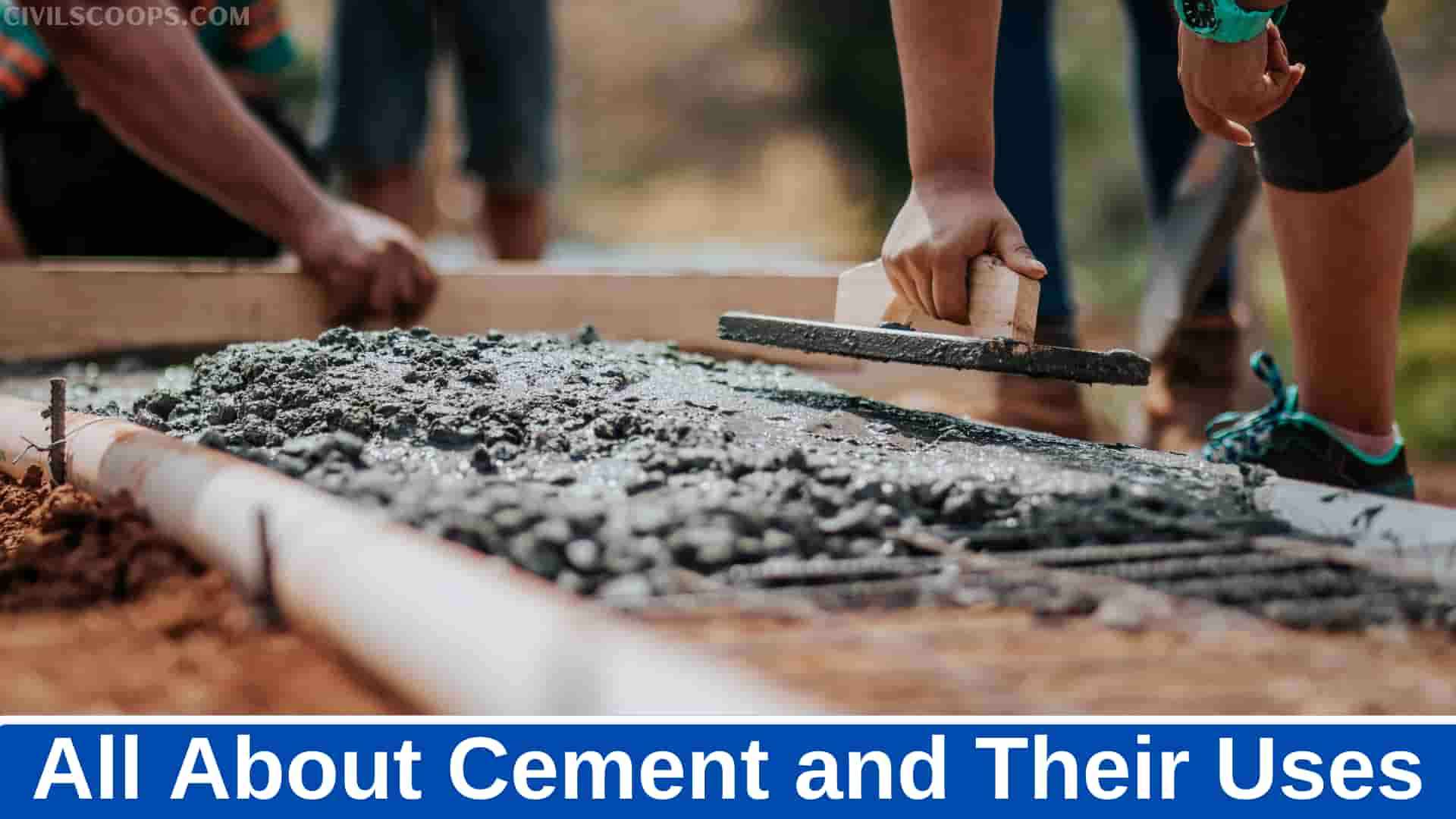15 Different Types of Cement and Their Uses

Table of Contents
Types of Cement and Their Use
Mainly cement is classified into two categories based on setting time and hardening; those categories and uses are written below:
[su_table responsive=”yes” alternate=”no”]
| Name of the Cement | Uses |
1. Hydraulic Cement: |
|
2. Non-Hydraulic Cement: |
|
3. Ordinary Portland Cement (OPC): |
|
4. Portland Pozzolana Cement (PPC): |
|
5. Rapid Hardening Cement: |
|
6. Quick Setting Cement: |
|
7. Low Heat Cement: |
|
8. Sulphate Resisting Cement: |
|
9. Blast Furnace Cement: |
|
10. High Alumina Cement: |
|
11. White Cement: |
|
12. Coloured Cement: |
|
13. Air Entraining Cement: |
|
14. Expansive Cement:
|
|
15. Hydrophobic Cement: |
|
[/su_table]
[su_box title=”FAQ” style=”default” box_color=”#333333″ title_color=”#FFFFFF” radius=”3″ class=”” id=””]
Uses of White Cement
White Portland cement is used in combination with white aggregates to produce white concrete for prestige construction projects and decorative work. White concrete usually takes the form of pre-cast cladding panels, since it is not economical to use white cement for structural purposes.
Uses of Coloured Cement
Colored cement is the perfect way to add a splash of color to your patio, walkway, or driveway, and it has other uses as well. It’s best not to try to “match” the mix with the color of your house since it’s difficult to predict the precise shade of the surface once it has dried.
Uses of Air Entraining Cement
The primary use of air-entraining concrete is for freeze-thaw resistance. The air voids provide pressure relief sites during a freeze event, allowing the water inside the concrete to freeze without inducing large internal stresses. Another related use is for deicer-scaling resistance.
Uses of Expansive Cement
Expansive cement are used generally to minimize cracking caused by drying shrinkage in concrete slabs and pavements structures and in special circumstances, such as prevention of water leakages. Expansive cement consist of a mixture of Portland cement, expanding agent, and stabilizer.
Uses of Hydrophobic Cement
These cement are used in the construction of dams, spillways, underwater constructions. Used in the structures that are exposed to rain or rain puddling, such as green roofs, other kinds of roofs, parking structures, and plazas. Used in drainage system works and manholes.
[/su_box]
[su_note note_color=”#F2F2F2 ” text_color=”#333333″ radius=”3″ class=”” id=””]
Like this post? Share it with your friends!
Suggested Read –
- What Is a Spillway | Types of Spillway | Definition Spillway | Spillway Design
- What Is Workability | What Is Workability of Concrete | Types of Workability of Concrete | Factors Affecting Workability of Concrete
- What Is Sewerage System? | Types of Sewerage System | Why We Need a Partially Separate System? | How Does a Sewer System Work? | How Does a Sewage Treatment Plant Work?
- What Is Seasoning of Timber? | Methods of Seasoning of Timber | Purpose of Seasoning of Timber
- What Is Gradient of Road? | Limiting Gradient of Road | Types of Gradient of Road | Exceptional Gradient of Road | The Gradient of Road | Purpose of Providing Gradient of Road | Importance of Gradient in Roads
[/su_note]
Originally posted 2022-08-02 14:30:47.
